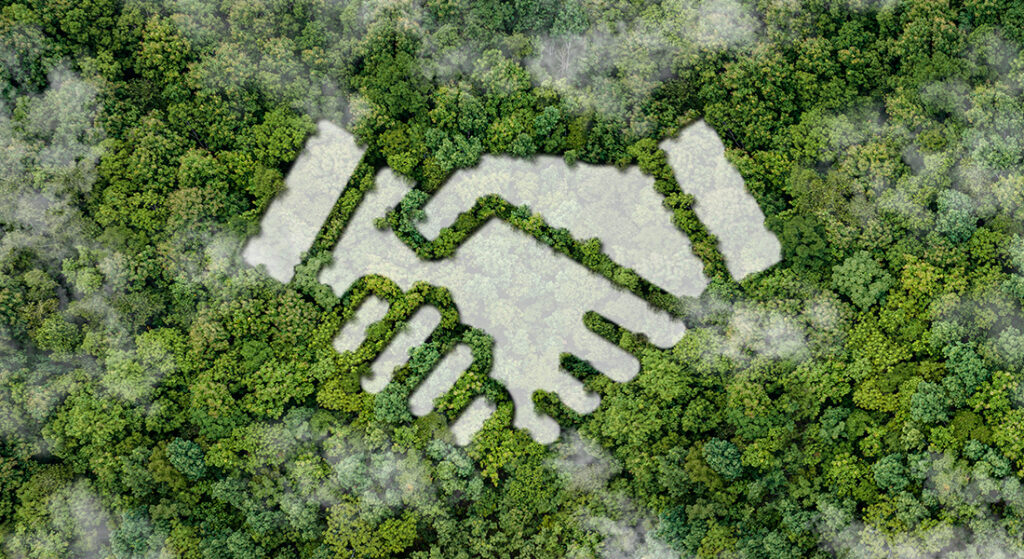Indian Women Battle Extreme Temperatures with Solar Reflective Paint

By promoting the application of white solar reflective paint on roofs, MHT (Mahila Housing Trust, a non-profit organization in India) provides a simple and affordable solution to reduce indoor temperatures and improve residents’ health and well-being. The paint, which reflects sunlight and limits heat absorption, has proven effective in lowering temperatures by 2 to 4 degrees Celsius.
Women in slums, such as Pinky from Jodhpur, have experienced relief from the oppressive heat and can now engage in activities like studying and working comfortably at home. The initiative helps individuals and contributes to city-level heat action plans, raising awareness about climate change and heat resilience. Despite challenges such as cost and paint durability, MHT continues its mission to install cool roofs and expand its impact in combating heat stress in vulnerable communities.
Air-gen: Harnessing Air Humidity for Sustainable Energy Generation

Researchers from the University of Massachusetts Amherst have developed a revolutionary device called Air-gen that generates electricity using air humidity as a sustainable and renewable energy source. By replicating the electrical properties of storm clouds, the device creates a charge imbalance through microscopic holes, resulting in a continuous and predictable flow of electricity.
The Air-gen device offers kilowatts of power if the air is humid, making it a versatile and non-stop energy source that can blend into the environment. Its compact size allows for stacking multiple devices, maximizing energy output without increasing the environmental footprint.
This breakthrough has the potential to make renewable energy more accessible, reduce negative environmental impacts, and open new possibilities for effective energy generation using renewable resources.
Indigenous-Led Kelp Seed Bank

The S’klallam Tribe and the Puget Sound Restoration Fund in Washington State are collaborating to establish a kelp seed bank to ensure the restoration and preservation of vital kelp habitats for future generations. Kelp is a keystone species, providing shelter, supporting marine biodiversity, and serving as a commercial resource.
However, warming waters and pollution have caused significant declines in kelp populations. The kelp seed bank initiative, part of the Puget Sound Kelp Conservation and Recovery Plan, involves storing kelp spores under controlled conditions until reintroduction efforts can be implemented.
The seed bank serves as a backup to safeguard kelp species, offering hope for the future of marine ecosystems and the numerous species dependent on kelp habitats. Restoration and reintroduction programs alongside the seed bank are crucial for maintaining a healthy marine environment.
Decline in Deforestation Rates Offers Hope for Brazil’s Amazon Rainforest

Government satellite data reveals that deforestation in Brazil’s Amazon has dropped by a third during the first six months of President Luiz Inácio Lula da Silva’s term compared to the previous year under former leader Jair Bolsonaro.
The data indicates a positive trend in reversing the devastation caused by deforestation. Efforts to combat deforestation include establishing a kelp seed bank, strengthened law enforcement, remote surveillance, imposing fines, seizing illegally raised cattle, and embargoes on areas.
While challenges remain, the commitment to restoring the workforce and implementing sustainable practices provides hope for preserving the Amazon and preventing net deforestation by 2030.
Harnessing Fungi: Transforming Slash Piles into Valuable Soil to Mitigate Wildfire Risks

Slash piles, created from thinning out unnaturally dense forests to reduce wildfire risks, are common in the American West. Environmental scientists are exploring using fungi to convert fire fuel into nutrient-rich soil to address the challenge of managing these piles sustainably.
Mycologists and foresters are experimenting with native fungi, such as oyster mushrooms, that can accelerate the decomposition of the slash piles, transforming them into valuable assets for local agriculture. By harnessing the unique capabilities of fungi, such as saprophytic species, that feed off dead organic matter, the goal is to create organic soil and fortify nutrients in forest ecosystems.
Although the method is in its early stages and faces scalability challenges, it offers a promising alternative to burning or hauling the slash piles, turning a potential hazard into a beneficial resource.
Australia’s Humpback Whale Population Bounces Back

Australia’s humpback whales are making an impressive recovery, with their population rebounding after facing near extinction due to extensive whaling by the Soviet Union in the mid-20th century. Recent citizen science census data shows a 57% annual increase in humpback numbers, reaching over 5,000 individuals. Experts estimate that around 40,000 humpbacks will migrate along Australia’s eastern coast this season.
The recovery of these majestic creatures has been attributed to the cessation of hunting, allowing them to rebound naturally. However, concerns arise regarding the carrying capacity of the environment and the potential impacts of climate change on their food source, krill, in the Antarctic.
While celebrating the humpback’s recovery, scientists remain vigilant in monitoring population trends and environmental factors to ensure long-term conservation.



